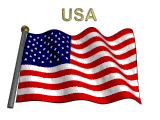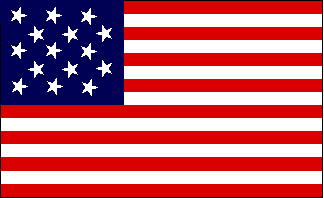Vexillology Information, Part 4 of 4
(the American flag)
Most flags have interesting stories to tell; even simple colors provide an insight into the symbolic “language” of flags.
A thoughtful mind, when it sees a nation’s flag, sees not the flag only, but the nation itself; and whatever may be its symbols, its insignia, he reads chiefly in the flag the government, the principles, the truths, the history which belongs to the nation that sets it forth. —Henry Ward Beecher (1813-1887), The American Flag

Flags Exist for Many Purposes
Flags are presented to honor and dishonor, warn and encourage, threaten and promise, exalt and condemn, commemorate and deny; they remind and incite and defy the child in school, the soldier, the voter, the enemy, the ally, and the stranger; yet, they are little understood in their forms, their functions, their origins, and their messages.
It is not necessary to discuss the visual and artistic appeal of flags; words can scarcely improve on the impact made by handsome flags floating in the breeze, even when they are represented by an artist on the printed page.

Francs Scott Key (1779-1843) was being prevented from leaving a British ship where he was trying to get a friend released and he witnessed the British Shelling of Fort McHenry in Baltimore, Maryland, during the night of September 14, 1814.
Key was anxious to know what was happening to the fortress, while the British attack was going on, even though he could occasionally see that the U.S. flag that was still flying "by the Rockets Red Glare" and after it ended, just past midnight, the final outcome was still in doubt.
In the early hours of the next morning "by the dawn's early light", he could see that the American flag was still flying and he wrote what later became known as "The Star-Spangled Banner".

The U.S. Star-Spangled Banner During the War of 1812
The Lyrics to the "Star-Spangled Banner"
O say can you see by the dawn's early light,
What so proudly we hailed at the twilight's last gleaming,
Whose broad stripes and bright stars through the perilous fight,
O'er the ramparts we watched, were so gallantly streaming?
And the rockets' red glare, the bombs bursting in air,
Gave proof through the night that our flag was still there;
O say does that star-spangled banner yet wave,
O'er the land of the free and the home of the brave?
On the shore dimly seen through the mists of the deep,
Where the foe's haughty host in dread silence reposes,
What is that which the breeze, o'er the towering steep,
As it fitfully blows, half conceals, half discloses?
Now it catches the gleam of the morning's first beam,
In full glory reflected now shines in the stream:
'Tis the star-spangled banner, O long may it wave
O'er the land of the free and the home of the brave.
And where is that band who so vauntingly swore
That the havoc of war and the battle's confusion,
A home and a country, should leave us no more?
Their blood has washed out their foul footsteps' pollution.
No refuge could save the hireling and slave
From the terror of flight, or the gloom of the grave:
And the star-spangled banner in triumph doth wave,
O'er the land of the free and the home of the brave.
O thus be it ever, when freemen shall stand
Between their loved home and the war's desolation.
Blest with vict'ry and peace, may the Heav'n rescued land
Praise the Power that hath made and preserved us a nation!
Then conquer we must, when our cause it is just,
And this be our motto: "In God is our trust."
And the star-spangled banner in triumph shall wave
O'er the land of the free and the home of the brave!
